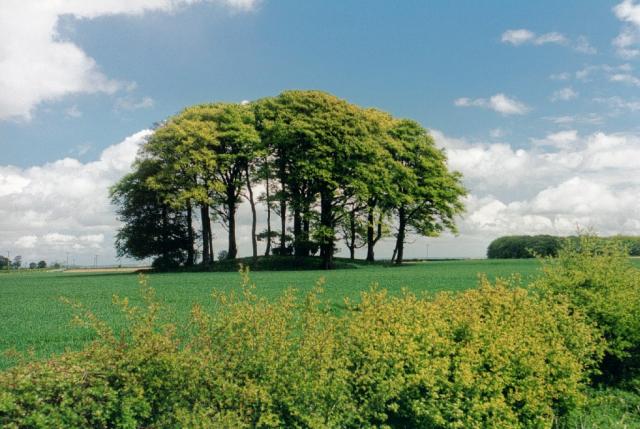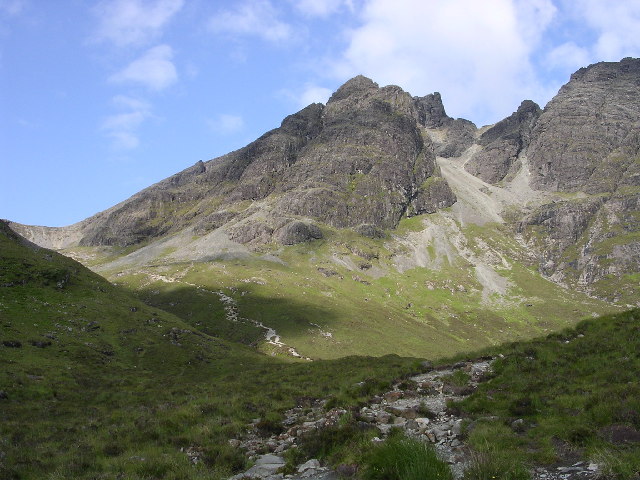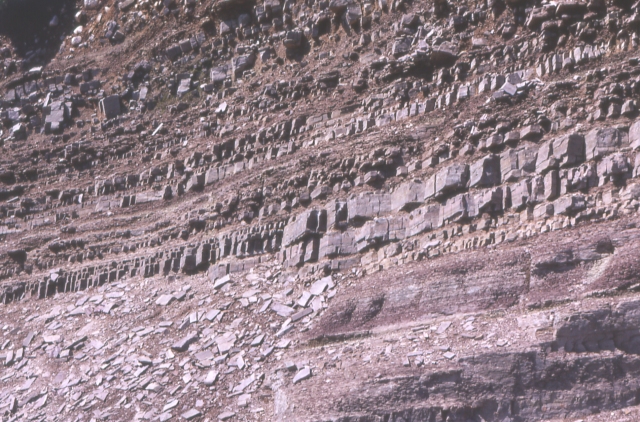|
Quinag
Quinag ( gd, A’ Chuineag) is an 808 m high mountain range in Sutherland in the Scottish Highlands, with an undulating series of peaks along its Y-shaped crest. The name Quinag is an anglicisation of the Gaelic name ''Cuinneag'', a milk pail, reflecting its distinctive shape. Geologically, Quinag is made of Torridonian sandstone, resting on a substrate of Lewisian gneiss. The highest peaks are capped by a thin skin of Cambrian quartzites with the gentle eastern slope of Spidean Coinich being a dip slope formed along the quartzite beds. The massif is an excellent place to appreciate the relationship between these three major rock units of the NW Highland. Ascent Quinag boasts three separate Corbett summits – Sàil Ghorm (Blue Heel 776 m/2,546 ft; ), Sàil Gharbh (Rough Heel 808 m/2,651 ft; ) and Spidean Coinich (Mossy Peak 764 m/2,506 ft; ). From the north and from the road crossing the Kylesku Bridge, Quinag presents a formidable sight ... [...More Info...] [...Related Items...] OR: [Wikipedia] [Google] [Baidu] |
Corbett (hill)
This is a list of Corbett mountains in Scotland by height. Corbetts are defined as Scottish mountains between in height with a prominence over ; solely imperial measurement thresholds. The first list was compiled in the 1920s by John Rooke Corbett, a Bristol-based climber and Scottish Mountaineering Club ("SMC") member, and was published posthumously, after his sister passed it to the SMC, in the 1953 edition of ''Munro's Tables''. Corbetts are the next category down from the Munros and Munro Tops in terms of height (e.g. below the threshold), but their explicit prominence threshold of , ensure they are material peaks. By definition, all Corbetts, given their prominence, are Marilyns. The SMC keeps a list of Corbetts. , there were 222 Corbetts in Scotland. 21 of these 222 Corbetts have a prominence that exceeds the P600 threshold of , which would class them as "Majors". The highest Corbett, Beinn a' Chlaidheimh, at is just below the threshold for a Munro, a status it ... [...More Info...] [...Related Items...] OR: [Wikipedia] [Google] [Baidu] |
Corbetts
This is a list of Corbett mountains in Scotland by height. Corbetts are defined as Scottish mountains between in height with a prominence over ; solely imperial measurement thresholds. The first list was compiled in the 1920s by John Rooke Corbett, a Bristol-based climber and Scottish Mountaineering Club ("SMC") member, and was published posthumously, after his sister passed it to the SMC, in the 1953 edition of ''Munro's Tables''. Corbetts are the next category down from the Munros and Munro Tops in terms of height (e.g. below the threshold), but their explicit prominence threshold of , ensure they are material peaks. By definition, all Corbetts, given their prominence, are Marilyns. The SMC keeps a list of Corbetts. , there were 222 Corbetts in Scotland. 21 of these 222 Corbetts have a prominence that exceeds the P600 threshold of , which would class them as "Majors". The highest Corbett, Beinn a' Chlaidheimh, at is just below the threshold for a Munro, a status ... [...More Info...] [...Related Items...] OR: [Wikipedia] [Google] [Baidu] |
Marilyn (hill)
This is a list of Marilyn hills and mountains in the United Kingdom, Isle of Man and Ireland by height. Marilyns are defined as peaks with a prominence of or more, regardless of height or any other merit (e.g. topographic isolation, as used in Munros). Thus, Marilyns can be mountains, with a height above , or relatively small hills. there were 2,011 recorded Marilyns. Definition The Marilyn classification was created by Alan Dawson in his 1992 book ''The Relative Hills of Britain''. The name Marilyn was coined by Dawson as a punning contrast to the '' Munro'' classification of Scottish mountains above , but which has no explicit prominence threshold, being homophonous with (Marilyn) '' Monroe''. The list of Marilyns was extended to Ireland by Clem Clements. Marilyn was the first of several subsequent British Isles classifications that rely solely on prominence, including the P600s, the HuMPs, and the TuMPs. Topographic prominence is a more difficult to estimate than ... [...More Info...] [...Related Items...] OR: [Wikipedia] [Google] [Baidu] |
Assynt
Assynt ( gd, Asainn or ) is a sparsely populated area in the south-west of Sutherland, lying north of Ullapool on the west coast of Scotland. Assynt is known for its landscape and its remarkable mountains, which have led to the area, along with neighbouring Coigach, being designated as the Assynt-Coigach National Scenic Area, one of 40 such areas in Scotland. The western part of Assynt has many distinctively shaped mountains, including Quinag, Canisp, Suilven and Ben More Assynt, that rise steeply from the surrounding "cnoc and lochan" scenery. These can often appear higher than their actual height would indicate due to their steep sides and the contrast with the moorland from which they rise. Many of the most distinctive peaks such as Suilven were formed during the last Ice Age, when they were left exposed above the ice sheet as nunataks, and they now remain as inselbergs of highly eroded Torridonian sandstone sitting on a bedrock of much older Lewisian gneiss. The Moine Thru ... [...More Info...] [...Related Items...] OR: [Wikipedia] [Google] [Baidu] |
John Muir Trust
The John Muir Trust (JMT) is a Scottish charity, established in 1983 to conserve wild land and wild places for the benefit of all. The Trust runs an environmental award scheme, manages several estates, mainly in the Highlands and Islands of Scotland and campaigns for better protection of wild land. In 2017, it took on a lease to manage Glenridding Common in the English Lake District. Activities The John Muir Trust was founded in 1983 by Denis Mollison, Nicholas Luard, Nigel Hawkins and Chris Brasher. The organisation was inspired by the work of Scottish-born conservationist John Muir – a key figure in the modern conservation movement, particularly in the USA where he worked to save Yosemite National Park and other areas of wilderness. Building on Muir's reputation there, the Trust has links with the Sierra Club, which John Muir founded in California in 1892. The Trust is a membership organization with more than 11,000 members (December 2017). It works to raise awareness of t ... [...More Info...] [...Related Items...] OR: [Wikipedia] [Google] [Baidu] |
Loch Assynt
Loch Assynt ( gd, Loch Asaint) is a freshwater loch in Sutherland, Scotland, east-north east of Lochinver. Situated in a spectacular setting between the heights of Canisp, Quinag and Beinn Uidhe, it receives the outflow from Lochs Awe, Maol a' Choire, and Leitir Easaich. It discharges into the sea at Loch Inver, via the river Inver. The general trend of the loch is west-northwest and east-southeast, while the western end bends sharply at Loch Assynt lodge to the southwest.Murray and Pullar (1910"Lochs of the Inver Basin"Page 149, Volume II, Part I. National Library of Scotland. Retrieved 16 July 2021 The loch is long, and about in maximum breadth. The total area is approximately and its drainage basin is over . The total volume of the loch is approximately and the maximum depth is . There is excellent fishing for trout, sea-trout, and salmon. Ardvreck Castle, once held by the MacLeods and Mackenzies, occupies a promontory on the north shore, west of Inchnadamph. Th ... [...More Info...] [...Related Items...] OR: [Wikipedia] [Google] [Baidu] |
Torridonian Sandstone
In geology, the term Torridonian is the informal name for the Torridonian Group, a series of Mesoproterozoic to Neoproterozoic arenaceous and argillaceous sedimentary rocks, which occur extensively in the Northwest Highlands of Scotland. The strata of the Torridonian Group are particularly well exposed in the district of upper Loch Torridon, a circumstance which suggested the name Torridon Sandstone, first applied to these rocks by James Nicol. Stratigraphically, they lie unconformably on gneisses of the Lewisian complex and their outcrop extent is restricted to the Hebridean Terrane. Rock type The rocks are mainly red and brown sandstones, arkoses and shales with coarse conglomerates locally at the base. Some of the materials of these rocks were derived from the underlying Lewisian gneiss, upon the uneven surface of which they rest, but the bulk of the material was obtained from rocks that are nowhere now exposed. Upon this ancient denuded land surface the Torridonian st ... [...More Info...] [...Related Items...] OR: [Wikipedia] [Google] [Baidu] |
Sutherland
Sutherland ( gd, Cataibh) is a historic county, registration county and lieutenancy area in the Highlands of Scotland. Its county town is Dornoch. Sutherland borders Caithness and Moray Firth to the east, Ross-shire and Cromartyshire (later combined into Ross and Cromarty) to the south and the Atlantic to the north and west. Like its southern neighbour Ross-shire, Sutherland has some of the most dramatic scenery in Europe, especially on its western fringe where the mountains meet the sea. These include high sea cliffs, and very old mountains composed of Precambrian and Cambrian rocks. The name ''Sutherland'' dates from the era of Norwegian Viking rule and settlement over much of the Highlands and Islands, under the rule of the jarl of Orkney. Although it contains some of the northernmost land in the island of Great Britain, it was called ' ("southern land") from the standpoint of Orkney and Caithness. In Gaelic, the area is referred to according to its tradi ... [...More Info...] [...Related Items...] OR: [Wikipedia] [Google] [Baidu] |
Scottish Highlands
The Highlands ( sco, the Hielands; gd, a’ Ghàidhealtachd , 'the place of the Gaels') is a historical region of Scotland. Culturally, the Highlands and the Lowlands diverged from the Late Middle Ages into the modern period, when Lowland Scots replaced Scottish Gaelic throughout most of the Lowlands. The term is also used for the area north and west of the Highland Boundary Fault, although the exact boundaries are not clearly defined, particularly to the east. The Great Glen divides the Grampian Mountains to the southeast from the Northwest Highlands. The Scottish Gaelic name of ' literally means "the place of the Gaels" and traditionally, from a Gaelic-speaking point of view, includes both the Western Isles and the Highlands. The area is very sparsely populated, with many mountain range A mountain range or hill range is a series of mountains or hills arranged in a line and connected by high ground. A mountain system or mountain belt is a group of mountain ran ... [...More Info...] [...Related Items...] OR: [Wikipedia] [Google] [Baidu] |
Rowan
The rowans ( or ) or mountain-ashes are shrubs or trees in the genus ''Sorbus'' of the rose family, Rosaceae. They are native throughout the cool temperate regions of the Northern Hemisphere, with the highest species diversity in the Himalaya, southern Tibet and parts of western China, where numerous apomictic microspecies occur.Rushforth, K. (1999). ''Trees of Britain and Europe''. Collins . The name ''rowan'' was originally applied to the species ''Sorbus aucuparia'' and is also used for other species in ''Sorbus'' subgenus ''Sorbus''. Formerly, when a wider variety of fruits were commonly eaten in Europe and North America, ''Sorbus'' was a domestically used fruit throughout these regions. It is still used in some countries, but '' S. domestica'', for example, has largely vanished from Britain, where it was traditionally appreciated. Natural hybrids, often including ''S. aucuparia'' and the whitebeam, ''Sorbus aria'', give rise to many endemic variants in the UK. ... [...More Info...] [...Related Items...] OR: [Wikipedia] [Google] [Baidu] |
Scottish Gaelic Language
Scottish Gaelic ( gd, Gàidhlig ), also known as Scots Gaelic and Gaelic, is a Goidelic language (in the Celtic branch of the Indo-European language family) native to the Gaels of Scotland. As a Goidelic language, Scottish Gaelic, as well as both Irish and Manx, developed out of Old Irish. It became a distinct spoken language sometime in the 13th century in the Middle Irish period, although a common literary language was shared by the Gaels of both Ireland and Scotland until well into the 17th century. Most of modern Scotland was once Gaelic-speaking, as evidenced especially by Gaelic-language place names. In the 2011 census of Scotland, 57,375 people (1.1% of the Scottish population aged over 3 years old) reported being able to speak Gaelic, 1,275 fewer than in 2001. The highest percentages of Gaelic speakers were in the Outer Hebrides. Nevertheless, there is a language revival, and the number of speakers of the language under age 20 did not decrease between the 20 ... [...More Info...] [...Related Items...] OR: [Wikipedia] [Google] [Baidu] |








